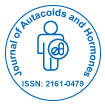Research Article
The Levels of Soluble Intercellular Adhesion Molecule, Vascular Adhesion Molecule and Se-Selectin Levels in Patients with Non-Alcoholic Fatty Liver Disease
| Ferda Bilgir1, Oktay Bilgir2*, Mehmet Calan3, Ozlem Calan4 and Arif Yuksel2 | ||
| 1Department of Allergy and Immunology, Celal Bayar University Medical School, Manisa, Turkey | ||
| 2Department of Internal Medicine, Izmir Bozyaka Training and Research Hospital, Bozyaka, Izmir, Turkey | ||
| 3Department of Endocrinology and Metabolism, DokuzEylul Unıversity Medical School, Izmir, Turkey | ||
| 4Department of Internal Medicine, Izmir Bozyaka Training and Research Hospital, Bozyaka, Izmir, Turkey | ||
| Corresponding Author : | Oktay Bilgir Department of Internal Medicine Izmir Bozyaka Training and Research Hospital Bozyaka, Izmir, Turkey Tel: +902322505050/1276 Fax: +902322614444 Email: oktaybilgir@gmail.com |
|
| Received December 21, 2014; Accepted January 30, 2015; Published February 05, 2015 | ||
| Citation: Bilgir F, Bilgir O, Calan M, Calan O, Yuksel A (2015) The Levels of Soluble Intercellular Adhesion Molecule, Vascular Adhesion Molecule and Se-Selectin Levels in Patients with Non-Alcoholic Fatty Liver Disease. J Autacoids Horm 5:108. doi: 10.4172/2161-0479.1000108 | ||
| Copyright: © 2015 Bilgir F, et al. This is an open-access article distributed under the terms of the Creative Commons Attribution License, which permits unrestricted use, distribution, and reproduction in any medium, provided the original author and source are credited. | ||
Related article at Pubmed Pubmed  Scholar Google Scholar Google |
||
Abstract
Background: High levels of adhesion molecules are known to result in inflammation of the vascular cells through endothelial dysfunction and thus atherogenesis. To this end, this trial was performed to investigate whether a cause of the accelerated atherogenesis in cases with non-alcholic fatty liver disease (NAFLD) was the increase in the levels of the adhesion molecules.
Material and Methods: 53 cases with NAFLD diagnosed using ultrasonography and biopsy and 46 control cases were enrolled in the trial. Soluble intercellular adhesion molecule (sICAM-1), Vascular adhesion molecule (sVCAM) and sE-selectinconcentrations were determined by using an enzyme linked immunosorbent assay (ELISA) kit from Biosource (Bender MedSystems GmbH, Vienna Austria) according to the manufacturer’s instructions.
Results: The levels of these adhesion molecules in patients with NAFLD were higher than those in the control subjects but only a significant difference in sE-selectin levels between the NAFLD and control groups was observed (p<0.05). However, there were no statistically significant differences in sICAM-1 and sVCAM-1 levels between the two groups (p>0.05).
Conclusions: The high levels of adhesion molecules and particularly of the sE-selectin statistically suggest that endothelial dysfunction and inflammation occur, which may represent a major factor in accelerating the atherogenesis process. We believe that detection of a high sE-selectin level would be leading the way when developing new therapeutical modalities for cases with NAFLD.

 Spanish
Spanish  Chinese
Chinese  Russian
Russian  German
German  French
French  Japanese
Japanese  Portuguese
Portuguese  Hindi
Hindi